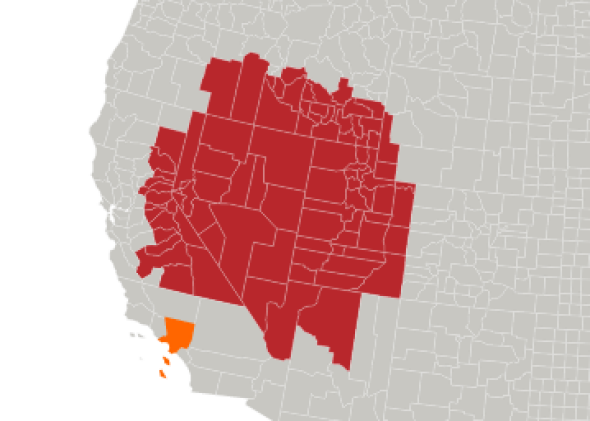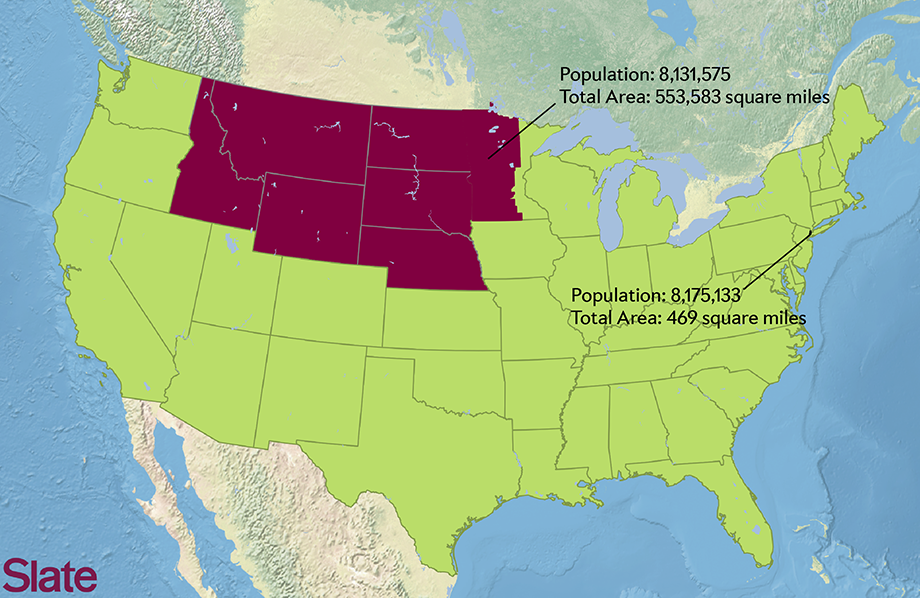Manifest Density
Use our interactive map to figure out how many sparsely populated flyover states it takes to equal one densely packed New York City.

Earlier this week, I split up the United States into 50 regions of equal population. In that story, I pointed out that the population of Manhattan is greater than that of North Dakota and South Dakota combined. If you throw in New York City’s other four boroughs, the Big Apple’s total population is just greater than 8 million. That’s about the same number of people who live in Idaho, Montana, Wyoming, North Dakota, South Dakota, Nebraska, and the western half of Minnesota combined.

Created by Ben Blatt
But don’t let my New York City–centric comparisons hinder your imagination. The interactive at the top of this page lets you visualize how different parts of the country compare in population density.
Click the button at the bottom of the interactive to select Los Angeles County, for instance, and then click anywhere on the map to generate a (roughly) circular region of (roughly) equal population. The population data come from the 2010 census, and the square mileage was calculated by summing each highlighted county’s total area. You can also use New Jersey (the most densely populated state), Wyoming (the least densely populated state outside of Alaska), Texas, the coasts (the group of all counties that come within 35 miles of either the Atlantic or Pacific oceans), and, yes, New York City as the baseline for your population comparison.
